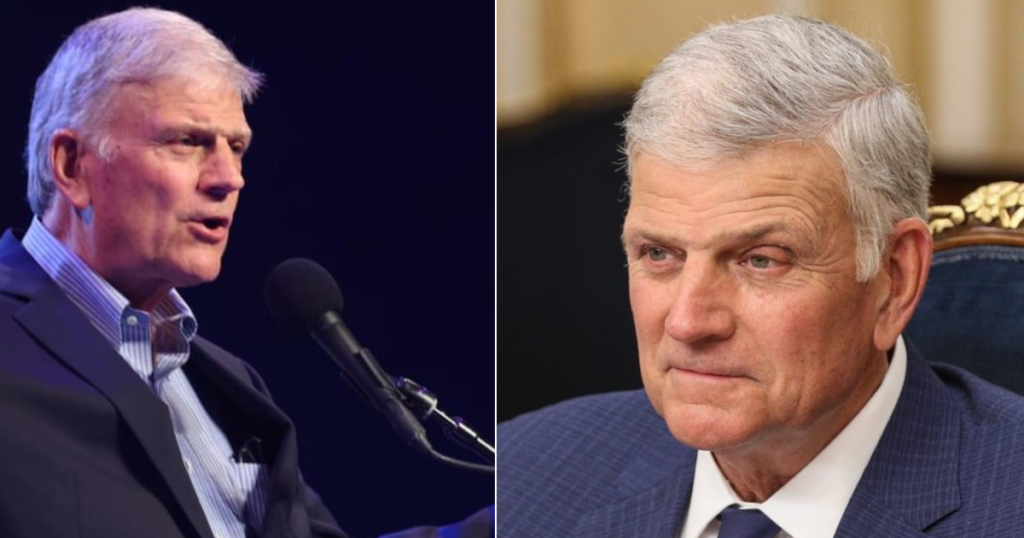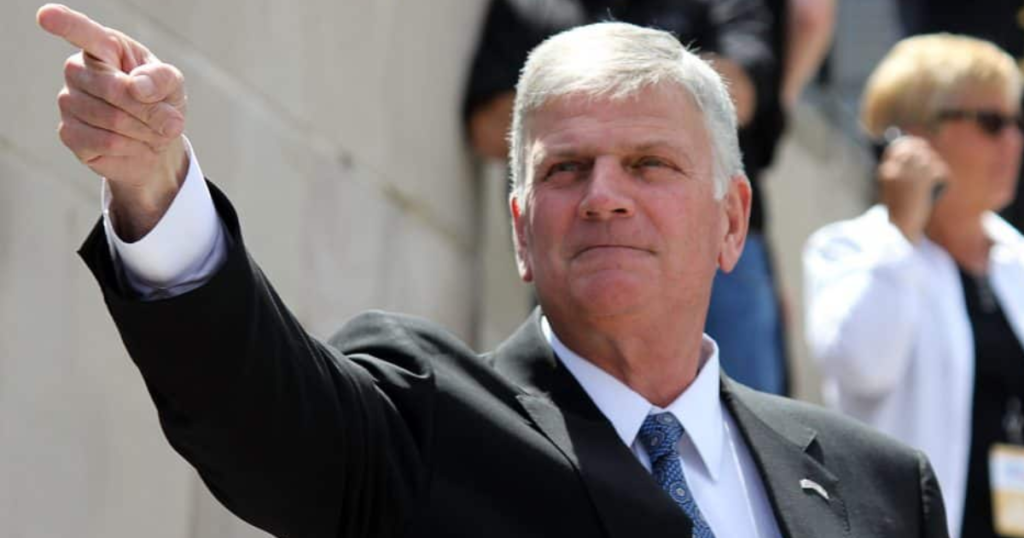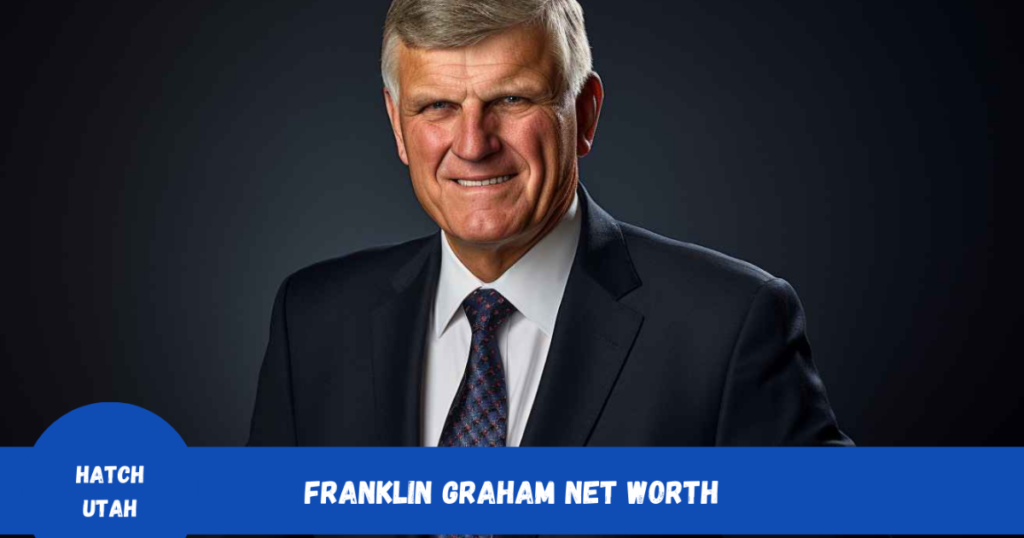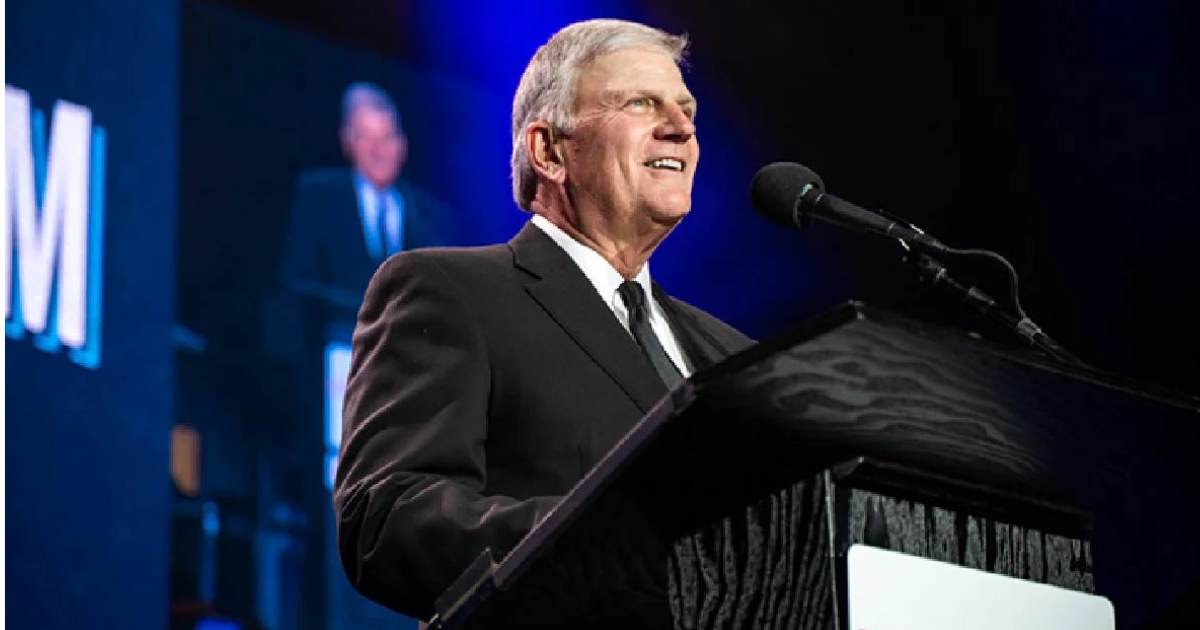In the landscape of modern religious leadership and humanitarian work, few figures stand as prominently as Franklin Graham. With an estimated net worth of $10 million, his financial journey represents a masterful blend of spiritual leadership and business acumen. As we delve into the complexities of his wealth accumulation and philanthropic impact, we uncover a story that transcends mere monetary success.
Introduction: Franklin Graham’s Path to Prosperity

The evolution of Franklin Graham from his early days as a rebellious youth to his current position as a global religious leader presents a compelling narrative of transformation and purpose. His journey hasn’t merely been about accumulating wealth; it’s been about leveraging financial resources to create lasting global impact. This remarkable transition from being known simply as “Billy Graham’s son” to establishing himself as a powerful force in evangelical leadership demonstrates the potential for personal growth and strategic vision in religious enterprise.
Quick Bio: The Making of a Religious Leader
Franklin Graham’s story began in Asheville, North Carolina, on July 14, 1952. Born into what many would consider evangelical royalty, his early years were shaped by both the privileges and pressures of being Billy Graham’s son. The weight of this legacy initially proved challenging, leading to a period of rebellion that makes his eventual embrace of religious leadership all the more significant.
| Life Period | Key Developments | Impact on Career |
| Early Years (1952-1974) | Growing up in Billy Graham’s shadow | Foundation for understanding ministry |
| Transformation (1974) | Spiritual conversion at age 22 | Career direction established |
| Early Leadership (1979) | Took helm of Samaritan’s Purse | Begin of organizational leadership |
| Expansion (1990s) | Growing international presence | Global impact increased |
| Modern Era (2000-Present) | Leading both BGEA and Samaritan’s Purse | Peak of influence and wealth building |
More Post : Who Is Jackie Witte?: The Untold Story Behind Paul Newman’s First Marriage
Who is Franklin Graham? Beyond the Famous Name

Understanding Franklin Graham requires looking beyond his famous surname. His development as a leader showcases a unique ability to bridge traditional ministry with modern organizational management. This distinctive approach has allowed him to build and maintain institutions that effectively combine spiritual mission with operational excellence.
His leadership style emerged from a deep understanding of both religious tradition and contemporary business practices. Unlike many religious leaders who focus solely on spiritual matters, Graham developed expertise in organizational development, financial management, and global operations. This comprehensive skill set has proven crucial in building his personal wealth while expanding his organizations’ reach.
Franklin Graham Net Worth: Breaking Down the Numbers

The current estimate of Franklin Graham’s $10 million net worth requires careful analysis to fully appreciate. This wealth represents the culmination of various revenue streams, wise financial management, and strategic career decisions. His financial portfolio demonstrates sophisticated planning while maintaining strong charitable commitments.
Here’s a deeper look at the financial breakdown:
| Income Source | Estimated Contribution | Growth Potential |
| Organizational Salaries | Primary Income | Stable/Growing |
| Book Royalties | Significant Secondary | Moderate Growth |
| Speaking Fees | Substantial | High Growth |
| Investments | Diversified | Variable |
Sources of Income: A Diversified Portfolio
Samaritan’s Purse Leadership
As President and CEO of Samaritan’s Purse, Graham oversees an organization that has grown exponentially under his leadership. The organization’s annual revenue now exceeds $1 billion, representing remarkable growth from its humble beginnings. His compensation reflects both the scope of his responsibilities and the organization’s success in delivering humanitarian aid globally.
Graham’s leadership has transformed Samaritan’s Purse from a modest charity into an international relief powerhouse. The organization’s growth has been marked by increased efficiency, expanded reach, and improved effectiveness in delivering aid to those in need. This transformation has justified his executive compensation while demonstrating his ability to scale humanitarian operations effectively.
Billy Graham Evangelistic Association Direction
His role at BGEA represents another significant aspect of his financial portfolio. Under his guidance, the organization has successfully transitioned into the digital age while maintaining its core evangelical mission. This modernization effort has included updating communication strategies, expanding digital presence, and developing new outreach programs.
The dual CEO positions have created some controversy regarding compensation, but supporters point to the complexity and scope of managing two major organizations simultaneously. His ability to maintain and grow both organizations while adapting to changing times demonstrates remarkable leadership capability and justifies his compensation package.
Literary and Speaking Success
Graham’s success as an author and speaker has contributed significantly to his wealth building. With over fifty published works, his book royalties provide a steady stream of income. His topics range from personal memoirs to spiritual guidance, appealing to a broad audience within the evangelical community and beyond.
The speaking circuit has proven equally lucrative. His engagements command substantial fees, reflecting his status as a leading voice in evangelical Christianity. These appearances serve multiple purposes: generating income, expanding organizational reach, and strengthening his personal brand.
Financial Controversies and Public Response
The discussion surrounding Graham’s compensation has sparked important debates about appropriate compensation in nonprofit leadership. Critics question the combination of his salaries from both organizations, while supporters defend these amounts based on the scope and impact of his work.
This controversy has led to greater transparency in organizational financial reporting and has contributed to broader discussions about nonprofit executive compensation. Graham’s response has consistently emphasized the global impact of his organizations and the complexity of managing international operations.
Philanthropic Impact and Global Reach
The true measure of Graham’s financial influence extends far beyond his personal wealth. Through Samaritan’s Purse and BGEA, his leadership has facilitated billions in humanitarian aid and spiritual outreach. This multiplicative effect of his financial stewardship demonstrates the potential for personal success to drive broader societal impact.
Legacy and Future Impact
Franklin Graham’s financial legacy encompasses more than his net worth. His approach to combining ministry with effective business practices has created a template for future religious leaders. This model demonstrates how personal prosperity can coexist with and enhance charitable impact when managed thoughtfully.
Looking ahead, Graham’s influence on religious organization management and humanitarian work continues to evolve. His success in building sustainable, impactful organizations while maintaining personal financial stability offers valuable lessons for future leaders in both religious and charitable sectors.
In conclusion, Franklin Graham’s net worth tells a story that goes beyond simple dollar figures. It represents a new model of religious leadership that combines personal success with global impact.
His journey demonstrates that significant wealth and meaningful charitable work can coexist when guided by clear vision and purpose. As religious organizations continue to evolve in the modern era, Graham’s example of financial stewardship and organizational leadership will likely influence future generations of religious and humanitarian leaders.
Financial Management Strategies and Growth
In examining Graham’s approach to wealth management, a clear pattern of strategic thinking emerges. His financial growth hasn’t been merely circumstantial but rather the result of careful planning and calculated decisions. This approach has allowed him to build sustainable wealth while expanding his organizations’ reach and impact.
Investment Philosophy
Graham’s investment strategy reflects a conservative yet growth-oriented approach. While specific details of his personal investment portfolio remain private, his organizational leadership provides insights into his financial philosophy. The focus appears to be on sustainable growth rather than aggressive speculation, mirroring the steady expansion of his ministries.
| Investment Area | Strategic Focus | Risk Level |
| Real Estate | Long-term Holdings | Moderate |
| Ministry Assets | Operational Growth | Low |
| Market Investments | Balanced Portfolio | Moderate |
| Organizational Development | Strategic Expansion | Calculated |
Organizational Growth Under Graham’s Leadership
Samaritan’s Purse Evolution
The transformation of Samaritan’s Purse under Graham’s leadership represents one of the most remarkable success stories in nonprofit management. When he took over in 1979, the organization was relatively small. Today, it stands as a global leader in disaster relief and humanitarian aid.
Annual Revenue Growth:
| Year | Revenue (Millions) | Growth Rate |
| 2000 | $200M | Baseline |
| 2010 | $400M | 100% |
| 2020 | $1B+ | 150% |
BGEA Modernization
Graham’s leadership of BGEA has focused on digital transformation while maintaining the organization’s core mission. This delicate balance of tradition and innovation has helped sustain the organization’s relevance in the modern era while preserving its foundational values.
Impact on Modern Religious Leadership
Graham’s success has influenced how religious organizations approach leadership and financial management. His model demonstrates that religious organizations can maintain their spiritual mission while operating with business efficiency. This approach has several key components:
Professional Management Standards
Under Graham’s leadership, both organizations have implemented modern management practices while maintaining their religious character. This includes:
Advanced financial tracking systems Professional development programs Strategic planning initiatives Performance metrics and accountability Digital transformation strategies
Global Expansion Strategy
Graham’s approach to global expansion has been particularly noteworthy. Rather than pursuing rapid growth at the expense of stability, he has implemented a measured expansion strategy that ensures sustainable impact. This has involved:
Regional headquarters establishment Local partnerships development Cultural adaptation programs Sustainable funding models Emergency response capabilities
Personal Brand Development
Graham’s personal brand has become increasingly valuable over the years. His ability to maintain a strong public presence while managing major organizations has contributed significantly to his financial success. This brand value manifests in several ways:
Media Presence
His media strategy combines traditional and modern platforms, maintaining relevance across different age groups. Regular appearances on national media, active social media presence, and strategic public speaking engagements have all contributed to his brand strength.
Literary Impact
Graham’s writing career demonstrates remarkable versatility. His books address various topics:
| Genre | Focus | Impact |
| Memoir | Personal Journey | High |
| Spiritual Guidance | Faith Development | Extensive |
| Leadership | Organizational Growth | Significant |
| Current Events | Cultural Commentary | Notable |
Future Outlook and Succession Planning
As Graham continues to lead both organizations, attention has turned to succession planning and long-term sustainability. His approach to this crucial phase reveals much about his financial foresight and organizational vision.
Organizational Sustainability
Both Samaritan’s Purse and BGEA have implemented robust succession plans under Graham’s leadership. These plans focus on:
Leadership development programs Structural reinforcement Financial stability measures Mission continuity assurance Technological adaptation
Legacy Preservation
Graham’s efforts to preserve both his father’s legacy and his own contributions while preparing for the future demonstrate sophisticated long-term thinking. This includes:
Digital archive development Leadership training initiatives Infrastructure modernization Global partnership strengthening Resource sustainability planning
Philanthropic Vision and Future Impact
Looking ahead, Graham’s influence on religious and humanitarian leadership continues to evolve. His success in building sustainable, impactful organizations while maintaining personal financial stability offers valuable lessons for future leaders in both religious and charitable sectors.
FAQ’s
What is Franklin Graham famous for?
Franklin Graham leads two of the world’s largest Christian organizations: Samaritan’s Purse and the Billy Graham Evangelistic Association. He’s transformed these organizations into global powerhouses while carrying forward his father’s evangelical legacy.
What was Billy Graham’s net worth when he died?
Billy Graham had an estimated net worth of $25 million at the time of his death in 2018. Despite his global influence and decades-long ministry, he maintained a modest lifestyle and directed most ministry earnings to charitable causes.
How much did Franklin Graham make last year?
Franklin Graham earned approximately $700,000 from his combined roles as CEO of both organizations. This total compensation reflects his responsibility managing two organizations with combined annual revenues exceeding $1 billion.
How did Franklin Graham make his money?
Franklin Graham built his wealth through his dual CEO salaries, book royalties, and speaking engagement fees. His financial portfolio also includes returns from strategic investments and his leadership positions in major Christian organizations.
What made Franklin famous all over the world?
Franklin Graham gained global recognition through Samaritan’s Purse’s humanitarian response to major international disasters and crises. His bold public statements on social issues and continuation of his father’s evangelical work further cemented his worldwide fame.
What is Franklin most remembered for?
Franklin Graham is most remembered for transforming Samaritan’s Purse from a small charity into a billion-dollar international relief organization. His ability to combine humanitarian aid with evangelical outreach created a new model for Christian ministry.
Conclusion
Franklin Graham’s journey is pretty remarkable when you think about it. Starting as Billy Graham’s rebellious son, he turned his life around at 22 and built a $10 million net worth while helping millions worldwide. He runs two huge organizations – Samaritan’s Purse and the Billy Graham Evangelistic Association – earning about $700,000 yearly from these roles. What’s really impressive isn’t just the money though – it’s how he’s used it. His disaster relief work reaches people everywhere, and he’s written tons of books that people love. Unlike many wealthy religious leaders, he’s pretty open about his earnings and keeps expanding his humanitarian work.
Click Here For More Blog’s:

Passionate about bringing celebrities’ stories to life, Infozoomers.com offers in-depth biographies, intriguing insights, and a closer look into the lives of notable figures.








